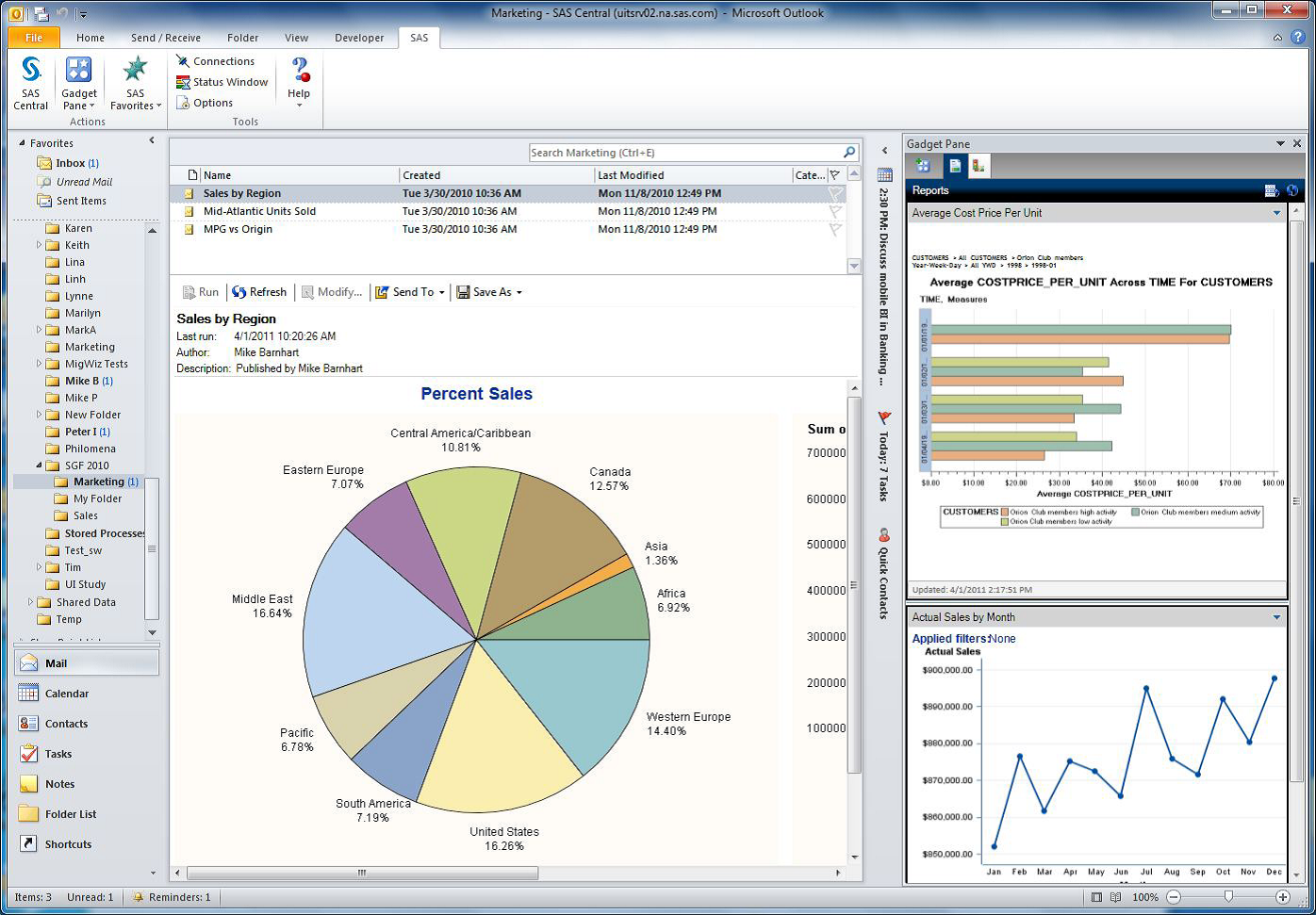

SAS Workspace Server – The SAS Code generated by various client applications is sent to this server for execution.

SAS servers are usually installed on different machines.
#Sas bi tools windows#
SAS Servers are similar to windows servers which run in the background to serve the requests rose from client. Server Tier – This includes all different types of SAS Servers. Using SAS/ACCESS we can connect to external databases like Oracle DB2 etc. It includes SAS Datasets, OLAP cubes, SAS SPDS (Special Performance Data Server), SAS SPDE, Other RDBMS tables like oracle, ERP systems etc. This can be easily imagined with the following diagram:Īll these tiers can have been installed on the same machine or might be on different machines however it is common practise to have server tier and web tier on one machine and data tier and client tier on different machines.ĭata tier – Is nothing but where the all Enterprise level data resides. This helps SAS in achieving single storage of data and consistency of the information among all the applications using it. This metadata is then shared with all the applications under SAS Open Metadata Architecture.

SAS stores its metadata in centralised repository which in turn is managed by SAS Metadata Server. It is the location where all this metadata is saved in some specific format.
#Sas bi tools how to#
Information about How to read in data from non SAS location.ĭescription of report content rather than the actual report itself.ĭetails of the access rights of all users.Ī description of the source and target tables used in data integration jobs as well as details of all the transformations. The name of the column rather than the actual values stored within it.

So it is same with SAS as well In the context of SAS metadata is the information about all the resources used in the provision of BI. All those terms are referring nothing other than metadata. In another example when some reporting application needs to produce the weekly report it needs the information about the fields on the report, format of those fields which are going to be represented to the user what all database tables its going to deal with in which library or schema they are located etc. In more specific term you define the table structure which is gets recognized as tables Metadata. Usually many applications which deal with the DATA need some basic information about it from their perspective for example a database system where you are going to save the data needs to know how user wants the data to be saved? So when you fire a create table command on the database is nothing but you give that information to the database system. Metadata is often referred as ‘data about data’ but I would like to say it as it is nothing but additional information of your data. This question teased me a lot since my college days.
#Sas bi tools update#
SAS stores the data only once which and shares its metadata across all the applications dealing with that data which might be ETL tool trying to update that data or data mining tool trying to dig out that data for some ad-hoc queries or might be reporting tool producing monthly report for the business. With the way the platform is structured and the way metadata (The metadata is explored in details at the below sections) is handled it becomes feasible to represent the single version of truth to the intended users. It enables the users to extract and transform enterprise wide data into fully integrated reporting warehouse, leading to more usable business data and more effective decision making. SAS has developed end to end business intelligence solution named as SAS Enterprise Intelligence Platform. How SAS deals with Business Intelligence? So decision makers can more concentrate on their business of making decisions instead of wasting time in digging plies of enterprise data. These tools and techniques help the system to provide right information to right people at right time and right format. Typically it is achieved by various Data warehousing, Data mining and reporting tools and techniques. As name suggests it’s the Intelligence one gains from the business about the business.


 0 kommentar(er)
0 kommentar(er)
